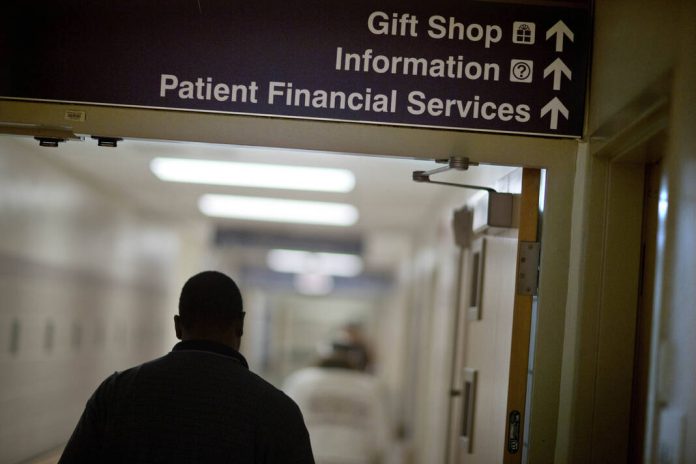File – A sign indicating visitors to the hospital’s financial services department. Friday, January 24, 2014. Medicaid coverage will end for millions of Americans in 2023, forcing many into unfamiliar territory in the health insurance market. (AP Photo/David Goldman, File)
File – A sign indicating visitors to the hospital’s financial services department. Friday, January 24, 2014. Medicaid coverage will end for millions of Americans in 2023, forcing many into unfamiliar territory in the health insurance market. (AP Photo/David Goldman, File)
According to the U.S. Census Bureau, the number of Hoosiers without health insurance decreased from 2021 to 2022, with the number of uninsured decreasing by 0.6% to 7%.
“In seven states with lower uninsured rates in 2022, the difference was driven by increases in private insurance. In 10 states, lower uninsured rates were associated with increases in public coverage.” said David Waddington, the department’s division chief.
The report attributes the coverage expansion in Indiana to an increase in the number of people enrolled in public health insurance options, such as Medicaid, rather than major changes to private insurance plans. Six other states also fell into the same category, including Alabama, California, Georgia, Illinois, Michigan and Oklahoma.
In three other states (Missouri, New York, and Virginia), private insurance enrollment declined, but increases in public enrollment increased overall coverage, and programs such as Medicaid reduced uninsured rates. It occupied 10 states.
Expanding Medicaid coverage
However, the increase in coverage may be temporary.
Hoosiers enrolling in Medicaid under COVID-19 policy aimed at cushioning the pandemic’s tumultuous economic impact as millions lose jobs and therefore private insurance coverage. The number of has increased.
The federal government increased its share of Medicaid spending to encourage states not to drop coverage during the public health emergency that ended earlier this year.
Medicaid enrollment rose from 1.4 million before the pandemic in 2020 to a high of 2.2 million in April 2023, according to the Indiana Family and Social Services Administration (FSSA), which oversees the program.
More than 208,000 Hoosiers have lost coverage in the months-long “rollback” process since FSSA began reviewing Medicaid rolls in April. An additional 363,000 people remained insured, according to the nonprofit health policy group KFF’s Medicaid Tracker.
The Census Bureau’s findings cover enrollment in 2022, meaning health insurance coverage could drop in next year’s report.
According to the bureau, the public insurance coverage rate increased from 35.9% to 36.8% from 2021 to 2022. Employment-based coverage fell from 58.2% to 57.4% over the same period, while directly purchased coverage increased slightly from 12.6% in 2021 to 13% in 2022.
Other income changes, poverty
Indiana’s findings come from the Census Bureau’s annual American Community Survey, which also found that while median household income in Indiana has declined, senior poverty has increased. . At the same time, the proportion of households receiving additional food assistance has declined.
Last week’s announcement did not speculate on the cause or identify state-level rates, but there were similar findings in several other states. The national median household income in 2022 was $74,755, down 0.8% from the previous year after adjusting for inflation. Indiana was one of 17 states where median income decreased, while five other states saw income increase.
While overall poverty rates did not increase in any state, child poverty increased in one state, West Virginia, and poverty rates for people 65 and older increased in 19 states, including Indiana.
Indiana was also one of 11 states where the percentage of households receiving Supplemental Nutrition Assistance Program (SNAP) decreased, while eight other states saw their numbers increase.
The Census Bureau plans to release additional one-year statistics from this survey and a consolidated five-year estimate in the coming months. Topics range from academic history to computer use.
of Indiana Capital Chronicle is an independent, nonprofit news organization covering state government, policy and elections.
